Thomas E. Ricks's Blog, page 243
July 5, 2011
Physical training: How to have a unit run to maximize its combat effectiveness

We've had mucho
discussion lately of running, so I was struck by RVN SF VET's commentary,
which comes at this from the approach not of the individual but of a unit
seeking to maximize its combat effectiveness. It is worth considering the
difference.
By a RVN SF VET
Best
Defense combat fitness correspondent
I was out on the dock last night
talking with a Marine from the 1960's. I was surprised to learn how smart his
ANGLICO leaders were "in the day." He told me that they ran in
formation in full combat gear! BUT, they switched to a march at the half-mile
to regain cohesion and then began to run again. They ran very long distances.
They were doing a variation of the fartlek while using it to regroup and keep
together.
The mission was to get to the end
with every Marine -- NO ONE WAS LEFT BEHIND. (Essentially, the Marine Corps
mantra.) So, if a Marine was starting to flag, another Marine took his rifle.
If that wasn't enough, another Marine took his pack. If he was still in
trouble, two Marines would get on either side of him, grab his belt, and propel
him to the finish. If necessary, I think that they would have carried him. No
fall-outs!
Of course, it was not acceptable
for this to happen to the same man repeatedly, "but anyone can have a bad
day." This is a very different type of long unit run. This is a completely
different philosophy. This was a combat philosophy.
They were told that they had to
arrive with maximum combat power. They needed that rifleman. That's the way it
should be. How could they have been so smart?
They wore the wrong shoes and
carried a lot of weight, but they did the run as intelligently as possible. How
do we forget these things?
RVN SF VET was in the shit before you were in your diapers.
Coast Guard commander relieved
Thumbs up for Noam Chomsky, and a Best Defense razz for old David Frost

And that is a
headline I thought I'd never write about Professor Chomsky. The old-school hard-core
MIT leftist has issued a letter denouncing
his old friend Hugo Chavez for undermining Venezuelan democracy.
Better late than
never.
Meanwhile, David
Frost, who may be sleazier than I thought, seems to have been pocketed lots of
money to help
Col. Qaddafi with his image.
(HTs to BH and Dr. AM)
Did the ISI murder a Pakistani reporter? Plus, blog comment of the day: When a U.S. diplomat took charge at the embassy
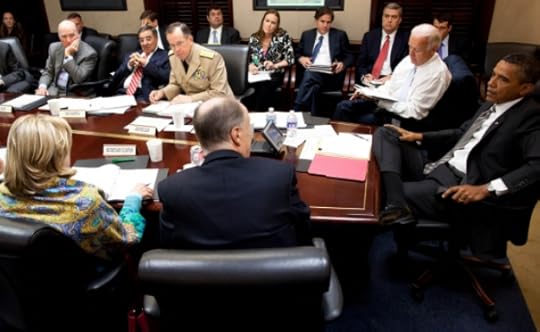
The New York Times reports that the ISI
ordered the
recent murder of a Pakistani journalist. (As a former Washington Post reporter, it chafes me a bit to admit it, but the Times seems to me to have been doing a
really good job lately on Pakistan and on foreign coverage in general. I hope
they keep it up under the Abramson regime -- Jill is a former colleague and a
terrific journalist but she lacks foreign experience.)
And here is an
interesting memory
of the early '80s in Pakistan.
By "Kriegsakademie"
Best Defense department
of politco-military affairs
Many, many years I
was serving in Islamabad when Deane Hinton arrived as
the new ambassador. Pakistani provincial elections were scheduled about three
weeks after his arrival.
At the first country
team meeting Deane distributed sheets of paper with all the political parties
in Pakistan and all the provinces. Everyone on the country team was given five
minutes to write down their predictions of the percentage of the vote each
party would get in each province and then hand it to the ambassador in a signed
and sealed envelope.
On the morning after
the election results came out, we came to country team meeting to find all the
name plates in "the bubble" re-arranged and re-titled. The Ag attaché was now
listed as the DCM (he had done the best prediction), I was listed as Pol Couns
(2nd best) etc. The actual Political Counselor was 2nd to last and the Defense
Attaché (an Army Intel guy and FAO) was dead last.
That was one of many
wake-up calls from Hinton that he expected his team to get out and know what
was going on in Pakistan.
Younger staff
generally enjoyed the challenge, senior staff generally resented it.
Amb Hinton's little
game nicely captured the lack of local knowledge that it the theme of this
discussion.
July 1, 2011
Counterterrorism: What the new White House strategy document leaves out
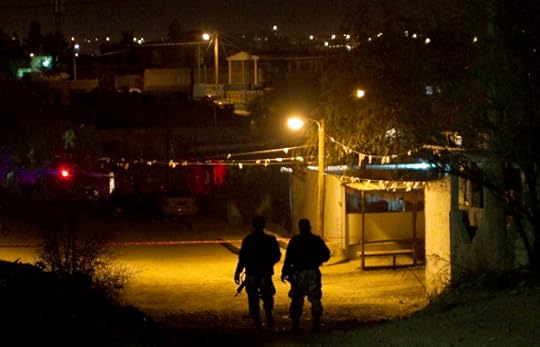
By Matthew Irvine
Best Defense bureau
of keeping your eye on the ball
The Obama administration rolled out the unclassified version
of its long-awaited counterterrorism strategy document on
Wednesday.
Put simply, this is a war plan against al Qaeda. The document
is al Qaeda-centric to the point of being al Qaeda-obsessed. What is striking
about the strategy is not so much what it says about al Qaeda or its repeated
mentions of killing Osama bin Laden (5 of them), but what it left out about
counterterrorism more broadly:
Terrorists who aren't AQ: The document
mentions "other terrorist concerns requiring focus and attention" such as
Hamas, Hizballah, the FARC, and Lashkar-e-Taiba. However, the document does not
address these groups in a substantive way.
State-sponsors of terror: While
recognizing that some states (Iran and Syria) support terrorist organizations,
the strategy does not spell out what this means for broader foreign policy
towards these countries. Pakistan is notably absent from this list despite its established ties to the Haqqani Network, Afghan Taliban, and Lashkar-e-Taiba.
Mexico: The growing violence in Mexico
did not make the cut in the new strategy. With more than 35,000 dead over the last five years,
including numerous government officials, kidnappings, and car bombings, Mexico
is emerging as a principal security question for folks on
both sides of the border.
The Internet: Cyberterrorism and the
increasingly active use of the internet as a virtual safe haven got only
lip-service in the unclassified version of the White House report. As Spencer
Ackerman at DangerRoom points out, this is not an
adequate treatment of what is a growing problem.
Domestic Terrorism: Despite DHS calling
attention in 2009 to the resurgence in right wing extremism, the new
CT strategy does not address this very distinct threat. You don't have to go too far back in time to
see the Unabomber, Tim McVeigh, the rise of right-wing militias as a
pre-eminent counterterrorism concern.
Pakistan: The President's
counterterrorism advisor John Brennan argued on Wednesday that "there's no
alternative to us or to the Pakistanis to ensuring that we continue engaging
with them." I'm left asking: What happens if the United States and Pakistan
don't make up? The United States and Pakistan suffered a bitter divorce in the
1990s. What's to stop that from happening again?
Lastly, what comes next? Brennan also
declared "al Qaeda is in its decline," but went on to warn of an adapting enemy
and AQ network that will pose a persistent threat. The 9/11 Commission cited a failure of
imagination as one of the primary faults in U.S. counterterrorism thinking ten
years ago. After reading the 2011 CT strategy, (and the 2003 and 2007
documents) I am left asking the question: What comes next? What are we missing?
What are we failing to imagine?
Following Longstreet and his wife from the Civil War to World War II
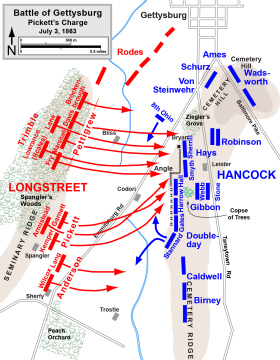
Here's a great
anecdote I hadn't heard before, from a recent FPRI talk
by Josiah
Bunting III:
…Henry "Hap" Arnold, the chief of the Air Corps in
World War II, was decorating workers at a B-29 factory in Wichita in 1943, and
the foreman introduced a woman in her 70s, saying, "This is our best worker."
The woman was Helen Longstreet, widow of the Civil War soldier James
Longstreet. He had lived a long life and married a young woman.
Indeed, I believe
his widow did not pass until 1962.
Veterans abused by for-profit schools

Good to see the VA weigh in, even if only in
blog form. I kind of feel they have been lagged this whole thing. Not sure why.
New book: Japan's post-disaster future
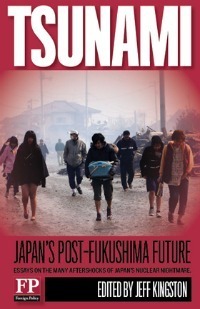
This sort of thing is going to revolutionize publishing, I
bet: Foreign Policy has a
new book out on the effects of the tsunami and nuclear mess on Japan. Proceeds go to charity so click away.
One effect of this e-publishing, I suspect, is that the
hurdle for dead paper books is going to get higher. On the other hand, the price
of books in general should come down, because it is so damn cheap to e-publish,
with almost no manufacturing, delivery or stocking costs, with pesky personnel
needing health care and managing at all three levels. I suspect we will go from
a two-tier industry (hardcover and paperback) to a three-tier industry.
But one big change: The e-book can be moved out so damn
fast, almost to the point that it is competing with magazines.
June 30, 2011
What I didn't know about Karachi: Insights into the future of Pakistan
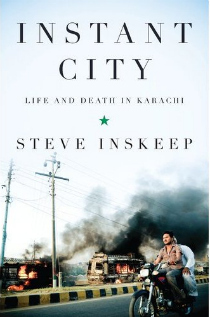
I've just finished
reading an advance copy of Steve Inskeep's Instant
City: Life and Death in Karachi, which comes out this fall. I don't
much like the title, but I really enjoyed the book. I feel like I have a much
better understanding of Pakistani politics now.
He takes us through
a terrific journey through a sprawling, terrifying city that might be the most
important place in the world right now. To my surprise, a lot of the book is
about fights over land development, which gets wrapped up in ethnic and
political tensions. Imagine Donald Trump as a Pashtun warlord/developer. One of
the most striking sections of the book is about a man who protested the
misuse/theft of park land, and the day after giving a press conference was shot
in the head and killed. His successor in the save-the-park movement also was
murdered.
Here are some of the
other things I learned about Karachi and Pakistan.
--The military is
the single largest property owner in the city, and control of land (not
necessarily ownership) is the biggest game in town.
--At the time of the
Pakistani independence, Karachi was majority Hindu. That changed quickly.
--Pakistan's
parliament building and the Kennedy Center in Washington, D.C. had the same
architect. (One more Pakistani grievance against America!)
--The city's police
answer not to the mayor but to the provincial government.
--Most of the city's violence is not related
to Islamic extremism.
--Karachi has 70,000
Boy Scouts
--Muhammad Ali
Jinnah, the founder of Pakistan, owned 200 fine English suits. Also, he was
Shiite, as was Zulfikar Ali Bhutto, the most important leader of Pakistan since
Jinnah.
--You always see
news photographs of torched busses when ethnic violence breaks out because the
bus business is seen as dominated by Pushtuns, and their busses are attacked in
retaliation for the burning of shops.
If this book has a
warning for the rest of the world, it is this: "When a growing city maintained
public services and protected the public interest, then private interests had a
chance to prosper. But when the public interest was neglected and the environment
was debased, then private interests, too, would be steadily and inexorably
destroyed."
The defense implosion (II): Congress eyes trimming military retirement pay

I've decided to
start a new running series on this blog, about how the defense budget will be
cut. I am doing this because I suspect that slashing Pentagon spending will be
a major running story in the coming years, perhaps even dominating the national
security discussion.
Even so, I am
surprised that military
retirement pay is one of the first things getting eyed. I've seen this
movie before: Thanks,
vets! Now get lost!
For those of you
keeping score at home, consider this
item the other day the first installment in this new series.
Thomas E. Ricks's Blog
- Thomas E. Ricks's profile
- 436 followers




